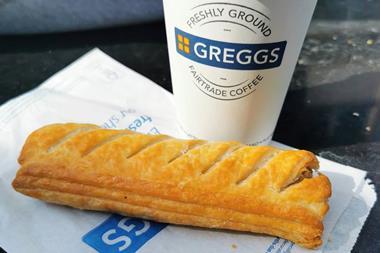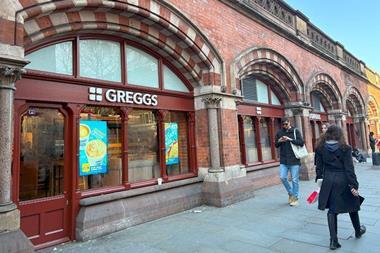Good news stories have often been hard to come by in the sector of late but according to MCA’s head of consumer insight, Gareth Nash, there are plenty of reasons to be cheerful when you look closely at the figures behind the recent performance of the eating-out sector
Positivity seems to be at a premium these days within the news headlines on our sector. There is no doubt that this is a challenging period for the market and the supply-side headwinds have been well documented. Whether it’s rising rates, rents, staff costs, input costs, competition, or all of the above and more, many operators are facing severe pressures on margin and some have been forced to close weaker sites, or at the very least scale back on expansion plans.
The challenges extend to the demand-side too. Confidence is low among consumers, with the continuing uncertainty of Brexit and its economic and political implications. Bills have been increasing, wage growth slowing and so there has been growing pressure on disposable incomes. MCA’s Eating Out Panel, which tracks the behaviour of a 72,000 strong representative sample of UK consumers each year, has shown how this has resulted in falling frequencies, leading to a 0.5% decline in total meals & snacks eaten out of home over the past 12 months, equating to 50 million lost occasions.
Where are these positives then?
So, it’s clear the sector faces some challenges. Yet consumed as I am, on a daily basis, by the huge quantity of insights we have at our fingertips at MCA, I always come across at least as many positives as challenges. This includes evidence pointing to the market’s overriding strength and of operators that continue to prosper by both attracting and delighting their customers. So, while there are challenges and concerns, there are always positives to find too. To prove it, here is a list of, hot off the press, positive pick outs from some of our very latest MCA analysis.
1. Short-term uncertainty, yes, but the out of home food trend is here to stay
While there has been a decrease in eating out occasions, with consumers going out less often, the overall share of UK adults participating in the market, at 93.5%, is actually at an all-time high. So, short-term frequencies may be under pressure, but the level of demand for eating out, in terms of sheer numbers of people, has risen. There is clearly increased caution among consumers at the moment, but this is against the backdrop of a longer-term shift in leisure spend towards eating out, due to an unprecedented depth and breadth of supply, plus the rise of a foodie culture spreading across the UK, driving growing numbers to seek experiences linked with food and eating out.
2. Move over dinner, it’s time for breakfast…or is it brunch?
With the long-term trend to eating out of home, one significant shift in eating out behaviour has been the increasing extension of visits throughout the day. As such, breakfast has had a surge in popularity and is now more likely to be eaten out of home than dinner. Breakfast occasions have grown by 3% year-on-year to 1.6 billion, a billion more than for dinner. Alongside this, we’ve also seen brunch establish itself as a major out of home day-part in its own right, now responsible for a substantial 587 million visits a year.
3. Don’t be blinded by the CVAs, branded restaurant sales remain fairly strong
Considering the focus of most casual dining headlines in recent years, I’m sure it may surprise a few to hear that the branded restaurant channel, as a whole, is actually still in pretty strong growth. While total eating out visits have fallen this year, those made to branded restaurants have risen by 3% to 457 million. Overall sales growth in branded restaurants, while down from a peak of 6.8% in 2015, is still expected to hit 3.7% this calendar year, well ahead of 1.5% in the total market.
4. Satisfaction soaring among casual dining customers
More impressive than the continuing sales growth in branded restaurants is that they are managing to maintain, nay improve, consumer perceptions, despite the heightening pressures to cut back on staff, site and food costs, potentially reduce portion sizes and increase prices. Despite all this, the Net Promoter Score for branded restaurants as a whole, across all meal-times, actually rose by 3 points to 31 over the last year, pushing it over the, very respectable, 30 mark for the first time in four years. Promotions have been key to driving increasingly value-conscious visitors into some casual dining chains, but the majority are being attracted by far more than this. Average scores among branded restaurant visitors have increased in 13 out of the 14 KPIs tracked on the Eating Out Panel, including the highest rating recorded over the past four years for food quality/taste, the top factor driving restaurant choice. Levels are also at 4-year highs for service and atmosphere/environment, both so important in ensuring consumers continue to see the attraction of eating out, particularly as the more convenient option of home delivery continues to gain popularity.
5. Focus on strugglers masks many casual dining successes
Most of the negative sector news, over the last couple of years, has been particularly focused on the struggles, site closures and CVAs at a growing list of mid-market casual dining chains such as Byron, Jamie’s Italian and most recently GBK. Yet, the biggest restaurant chain, Nando’s, has certainly proven how larger players can keep themselves relevant and continue to flourish. Nando’s Net Promoter Score among dinner customers increased by nine points over the last four years to an impressive 46, well ahead of the 33 market average. There has also been significant growth at many smaller brands, the likes of Hawksmoor, Giggling Squid and Dishoom, who have appealed to consumers with their more contemporary, specialist and authentic concepts.
6. Food To Go continues to fly
Another big positive for the market has been the continuing growth of Food To Go, for which occasions increased by 2% to 4.2 billion in the last year. Consumers may be low on confidence and income, but they also remain increasingly busy and time-pressed, seeking flexible, fast and convenient food & beverage solutions to meet their needs. Operators well aligned to meet these demands have thrived, demonstrated by the 9% increase in visits to sandwich & bakery retailers to 880 million this year, three times the growth rate achieved by any other channel. One of the next biggest risers has been coffee shops/cafés, where total meal & snack visits increased by 3% to 1.4 billion, while fast food visits rose by 1% to 1.5 billion.
7. Consumers flocking to sandwich & bakery shops for speed, convenience and improving food choices
Looking in more detail at the significant growth in sandwich & bakery retailers, this has clearly been built on meeting the major needs of Food To Go customers, with speed and convenience of location top of the list. The average customer rating for fast service in a sandwich or bakery shop has increased each year for the past four years to reach 8.4 out of 10 in 2018, now higher than in any other eating out channel. Meanwhile, as the likes of Greggs, Subway and Pret continue to press on with their physical expansion plans, the channel’s 8.8 average rating for convenience of site locations is higher than in any other channel bar workplace facilities, which clearly has an unfair advantage! Sandwich & bakery chains are not just relying on location and speed to drive growth. Greggs is a great example of a brand making bold changes to keep up with consumer trends. A growing focus on healthy and hot items has certainly contributed to increases in average ratings among the chain’s lunch customers for the food quality/taste, menu choice and product freshness. Add to this Gregg’s growing focus on the increasingly popular breakfast day-part and its inroads into travel locations, where footfall has remained more durable, and it is clear to see how positive, consumer-led strategies have driven its robust performance.
Success to be had if you know your consumer
There are many operators facing a tough time at present, but there is also evidence of the market’s resilience and of challenges being overcome to find success. The recurring recipe for this tends to revolve around a clear understanding of the consumer and a willingness to evolve in line with their changing needs and preferences. This is not easy to achieve and so I’m sure the negative sector news of operator struggles will keep on coming while tough market conditions persist. But, believe me, there are, and will continue to be, plenty of positives to be found amid the challenges.
To find out more about MCA research, please contact insight.enquiries@mca-insight.com .











































